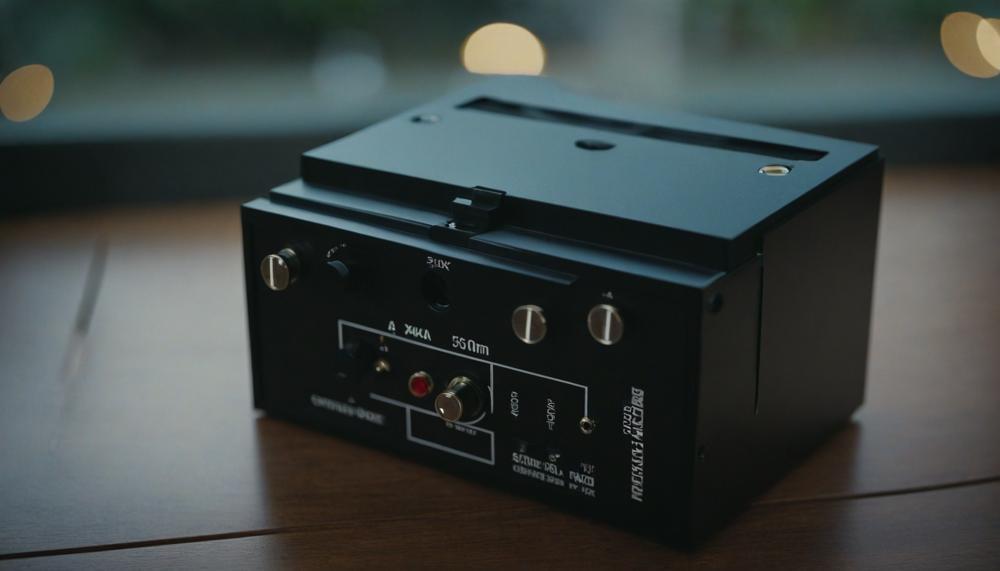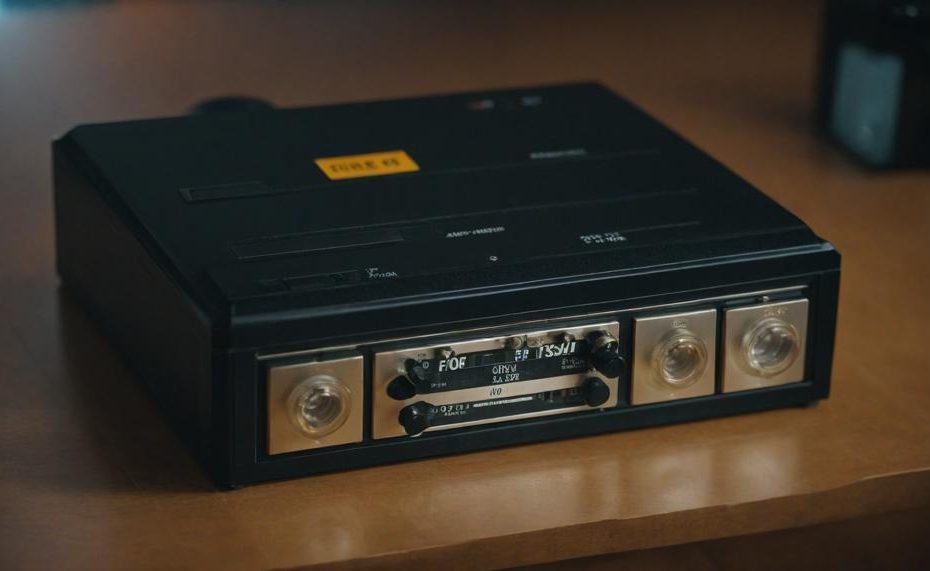Imagine a sudden electrical issue at your home, and you need to cut the power immediately. Knowing how to turn off the power to your house from outside is an essential skill that can prevent hazards and ensure safety.
It’s a straightforward process, and here’s a quick rundown to get you started:
- Locate the main breaker box: This is usually found on the side of your house or attached to a nearby pole.
- Find the “off” switch or lever: Look for the main breaker switch, typically labeled clearly.
- Toggle it to the off position: Switch it off to cut power to the entire house.
- Verify power shutdown: Check various appliances or lights inside to ensure the power is completely off.
- Consult an electrician: For thorough safety, especially before any major repairs, speak to a professional.
By following these steps, you can handle emergencies efficiently and keep your home safe. Stay tuned to learn more about each step in detail and understand why this knowledge is crucial for every homeowner.
Contents
Before You Begin: Circuit Breakers vs. Fuses
Circuit breakers and fuses serve as essential safety devices, but they differ significantly in operation, maintenance, and functionality. Here’s a breakdown of their main differences and how they can be used to turn off power to a house from the outside:
| Feature | Circuit Breakers | Fuses |
| Operation | Circuit breakers use electromagnets or bi-metallic strips to interrupt the electrical flow when current exceeds safe levels. When the unsafe current is detected, the breaker trips, breaking the circuit. | Fuses contain a metal wire that melts when too much current flows through it, thus breaking the circuit instantly. The melting of the wire is a quick response to overcurrent. |
| Resetting | Can be reset manually after tripping, allowing for easy restoration of power without replacing any parts. | Must be replaced after each activation, as the melting wire cannot be reused. |
| Speed of Response | Generally slower than fuses because they rely on mechanical or thermal responses to trip. | Typically faster due to the immediate melting of the wire, offering quick interruption of the circuit. |
| Maintenance | Requires less frequent maintenance since they do not need to be replaced after each trip. | Requires regular maintenance, as fuses need to be replaced each time they blow. |
| Cost | Generally higher initial cost but more cost-effective over time due to reusability. | Lower initial cost but can become expensive over time due to the need for replacements. |
Turning Off Power to a House from Outside
Both devices can help in shutting off power, but here’s how it works:
- Locate the Main Breaker Box: Typically found on the side of the house or a nearby pole.
- Identify the Main Switch: Inside the breaker box, look for the main switch or lever, often labeled “Main” or “Off.”
- Toggle the Switch: Flip the switch to the “Off” position. This action cuts off the electrical supply to the entire house.
- Verify Power Shutdown: Check the power inside the house to ensure it has been completely shut off.
Additional Tips:
- Always ensure power is off before performing any repairs.
- For fuse boxes, carry spare fuses for quick replacements.
- Keep the breaker box area accessible and clearly labeled for emergency situations.
Safety Considerations
When turning off power to a house from outside, several critical safety considerations must be observed to ensure personal safety and the effective disconnection of electricity. Here are the key points to keep in mind:
Personal Protective Equipment (PPE):
Always wear appropriate PPE, including insulated gloves and safety goggles, to protect yourself from electrical hazards.
Locating the Main Breaker Box:
Identify the main breaker box, which is typically attached to the house or on a nearby utility pole. Make sure you know its exact location before an emergency occurs.
Inspecting the Breaker Box:
Carefully inspect the main breaker box for any signs of damage, rust, or moisture. Damaged equipment can be hazardous, and moisture can increase the risk of electric shock.
Turning Off the Main Breaker:
Find the “off” switch or lever in the breaker box and toggle it to the off position. Ensure it is firmly in the off position to fully disconnect power.
Checking the House for Power:
After turning off the main breaker, verify that power is off throughout the house. This can be done by checking multiple light switches and outlets to confirm there is no electricity.
Consulting an Electrician:
If you are uncertain about any part of the process or encounter issues, contact a licensed electrician. It’s crucial to seek professional help to avoid any dangerous situations.
Emergency Preparedness:
Be prepared to handle emergencies by knowing these steps beforehand. In some situations, you might need to take immediate action to prevent hazards.
Follow Safety Protocols:
Adhere to established safety protocols and guidelines provided by local authorities or utility companies to ensure you are performing the task correctly and safely.
What You’ll Need
Turning off the power to a house from the outside is a vital safety measure. Below are the essential materials and tools you will need to accomplish this task safely and effectively.
| Item | Description | Use |
| Insulated Gloves | Electrical safety gloves designed to prevent electrical shock. | Wear these to protect your hands from electric shock while handling the breaker box. |
| Safety Goggles | Protective eyewear to shield your eyes from potential electrical arcs. | Use these to safeguard your eyes when dealing with electrical components. |
| Flashlight | A battery-operated light source. | Helps you see clearly inside the breaker box, especially in low-light conditions. |
| Voltage Tester | A tool to check if the electrical current is present. | Use this to confirm that power is off after switching the main breaker. |
| Lockout Tagout Kit | A safety system to ensure that the power remains off during work. | Utilize this to lock and tag the main switch to prevent accidental re-energization. |
| Flathead Screwdriver | A standard screwdriver with a flat tip. | Needed to open the breaker box or panel if it has screws securing it. |
| Protective Clothing | Non-conductive clothing that covers arms and legs. | Wear this to provide an extra layer of protection against electrical hazards. |
| Phone | A mobile device for emergency contact. | Keep this handy to call for help if needed. |
By ensuring you have these items on hand, you can safely turn off the power to your house from the outside, mitigating the risk of electrical shock and maintaining a safe environment for any necessary repairs or maintenance.
Instructions
To safely turn off the power to your house from outside, follow these steps:
| Step | Action | Details |
| 1 | Locate the Main Breaker Box | Find the box on an exterior wall, garage, basement, or near the utility meter. |
| 2 | Find the Switch or Lever | Identify the main power switch inside the breaker box. |
| 3 | Toggle to the Off Position | Flip the switch or lever to “Off” to cut power. |
| 4 | Check Power Throughout the House | Use a voltage tester or light switches to confirm power is off. |
| 5 | Speak to an Electrician | Consult a professional for safety and assurance. |
How to Turn off the Main Breaker
To safely turn off the main breaker to your home’s power from outside, follow these steps meticulously:
| Step | Description | Tips |
| Locate the Main Breaker Box | Find the breaker box on the side of the house or a nearby pole. | Often labeled and visible for quick access. |
| Identify the Main Breaker Switch | Open the box cover and look for the main switch or lever. | Should be clearly marked “Main” or “Main Breaker.” |
| Switch Off the Main Breaker | Use one hand to toggle the switch to the “Off” position. | This prevents electrical current from passing through your body. |
| Verify Power is Off | Check inside the house to ensure the power is completely off. | Test lights and appliances to confirm. |
| Consult a Professional Electrician | Seek professional advice for safety. | Especially if unfamiliar with electrical systems. |
How to Turn off a Branch Circuit Breaker
Turning off a branch circuit breaker safely involves the following steps:
Locate the Main Breaker Box
Find the main breaker box, typically attached to your house or a nearby pole. It contains the main switch that controls power to the entire house.
| Step | Action | Details |
| 1 | Find the Main Breaker Box | Usually located on the exterior of the house or on a nearby pole. |
Identify the Main Breaker
Open the breaker box and locate the main breaker, which is generally a larger switch at the top of the panel. This breaker controls all power to the house.
| 2 | Open the Box | Identify the larger main breaker switch at the top. |
Turn Off the Main Breaker
Carefully push the toggle lever on the main breaker to the “OFF” position. This will shut off all power to the individual branch circuit breakers, cutting power to the entire house.
| 3 | Toggle the Main Breaker | Switch to “OFF” to cut all power. |
Verify Power is Off
Check that all lights and appliances are off to ensure power is completely cut off. This verification step is crucial for safety before proceeding with any repairs or installations.
| 4 | Check for Power | Ensure all lights and appliances are off. |
- Consult with a Professional
For safety and compliance, it is recommended to consult with a professional electrician, especially if you are unsure about handling electrical systems. An electrician can assist with safe circuit breaker installation and maintenance.
| 5 | Contact an Electrician | Professional help ensures safety and compliance. |
How to Shut off the Main Disconnect in a Fuse Panel
To safely shut off the main disconnect in a fuse panel and turn off power to a house from outside, follow these steps:
| Step | Description | Tips |
| Locate the Main Breaker Box | Find the main breaker box on the exterior of the house or a nearby pole. | Ensure the area is clear of obstructions and easily accessible. |
| Identify the Main Disconnect Switch | Look for the switch labeled “Main” or “Off”. | Ensure it’s the main switch, not individual circuit breakers. |
| Wear Protective Gear | Wear insulated gloves and safety goggles. | Safety is paramount to avoid electrical shocks. |
| Turn Off the Main Disconnect Switch | Pull the lever or switch to the “Off” position using one hand. | Avoid touching other parts of the panel during this process. |
| Verify Power is Off | Check power in the house with a voltage tester. | Ensure no electrical current is present before proceeding with any work. |
| Consult a Professional Electrician | Contact a licensed electrician for any uncertainties. | Professional advice ensures additional safety. |
How to Remove Branch Circuit Fuses
Removing branch circuit fuses from your home’s electrical panel requires caution and precision. Here’s a step-by-step guide to ensure you do it safely:
Steps to Remove Branch Circuit Fuses
Locate Your Fuse Panel
Identify whether your home uses a fuse panel instead of a modern circuit breaker panel. Fuse panels are typically found in older homes and have screw-in fuses with glass windows.
Turn Off Main Power
Before handling fuses, ensure the main power is off. Locate the main fuse or breaker and switch it to the “off” position to cut off electricity to the entire panel. This reduces the risk of electric shock.
Identify the Blown Fuse
Open the panel door and visually inspect the fuses. A blown fuse usually has a visible break or discoloration in the fuse element. Use a flashlight if necessary to get a better view.
Unscrew the Fuse
Using one hand, gently unscrew the fuse by gripping only the ceramic rim or face. Avoid touching the metal threaded base to prevent any potential electrical contact. Rotate the fuse counterclockwise until it comes out of the socket.
Inspect and Replace
Once removed, inspect the fuse to confirm it is blown. Replace it with a new fuse of the same rating. Ensure the replacement fuse matches the specifications of the old one to avoid overloading the circuit.

Recheck Connections
Before turning the power back on, make sure the new fuse is securely in place. Close the panel door and switch the main power back on.
Conclusion
Cutting power to your house from the outside is a critical safety skill every homeowner should master. Imagine facing an electrical emergency where every second counts—knowing how to swiftly and safely disconnect the power can prevent severe damage and ensure your family’s safety. Here’s a concise guide to achieve this efficiently:
First, locate the main breaker box, which is typically mounted on an exterior wall or a nearby utility pole. Once found, open the cover to reveal the breakers inside. The main breaker switch, often labeled “Main” or “Off,” is the key component you’ll need to flip. Firmly toggle this switch to the “Off” position to cut all electricity flowing into your home.
After shutting off the power, verify the disconnection by checking multiple light switches and outlets inside your house. This ensures no electricity is present, providing a safe environment to handle any emergency repairs or inspections.
While this process is straightforward, it’s always wise to consult with a professional electrician, especially before performing any significant electrical work. Additionally, always wear appropriate safety gear, such as insulated gloves and goggles, to protect yourself from potential hazards.





